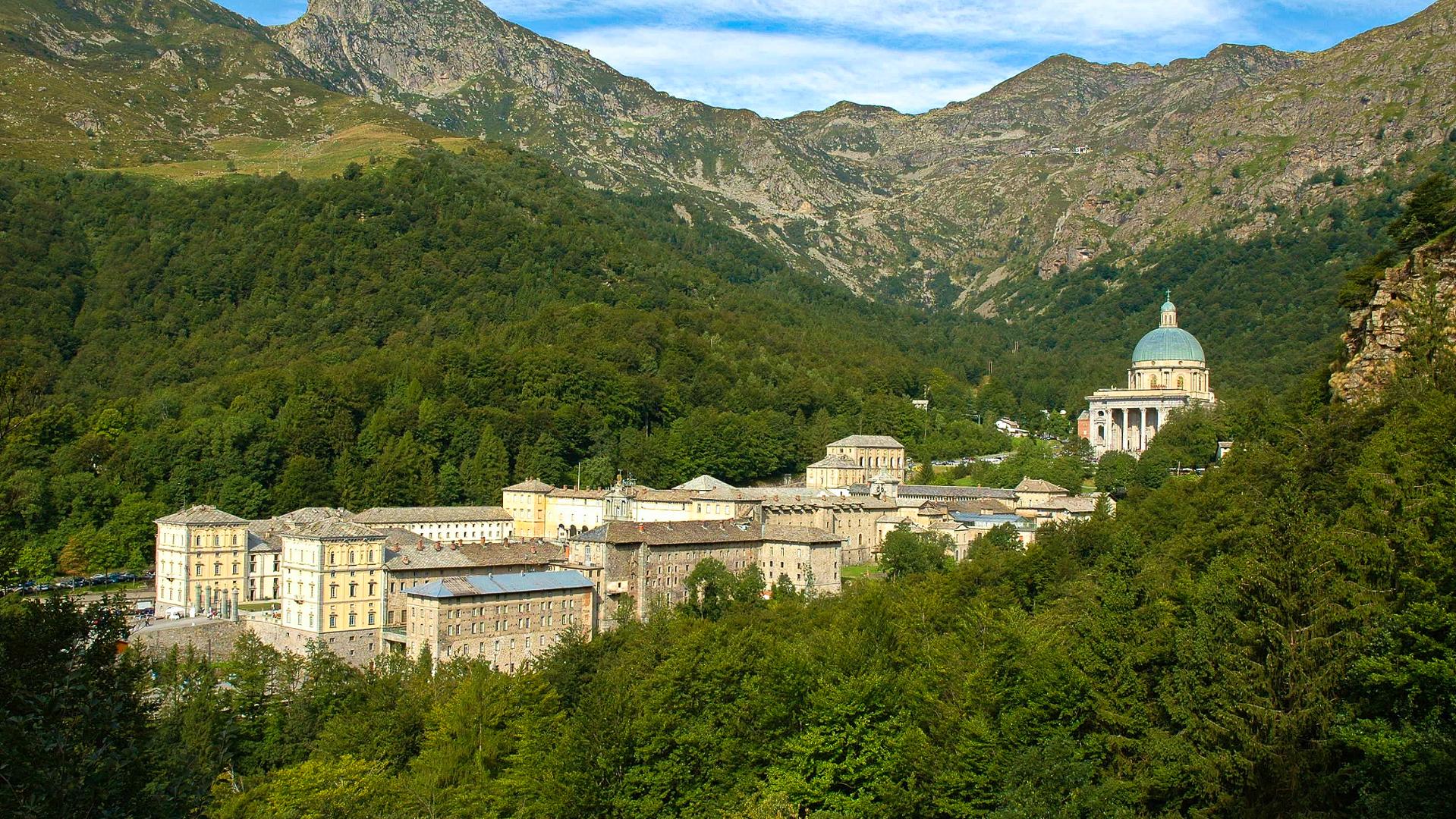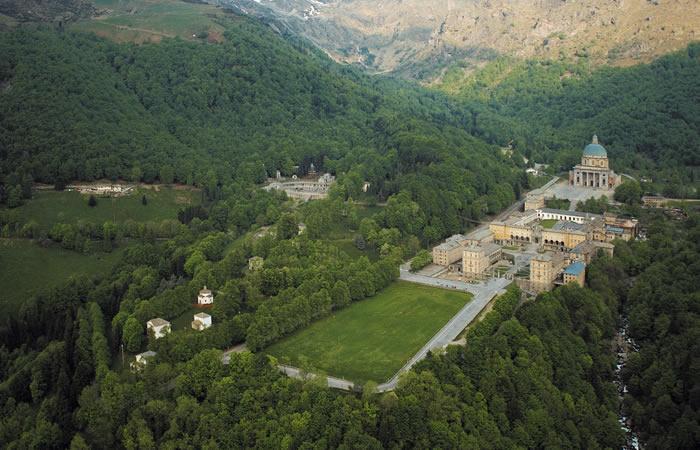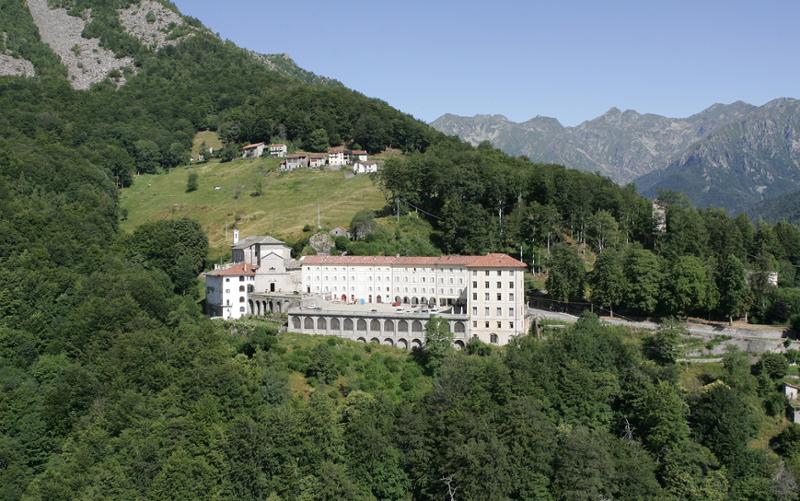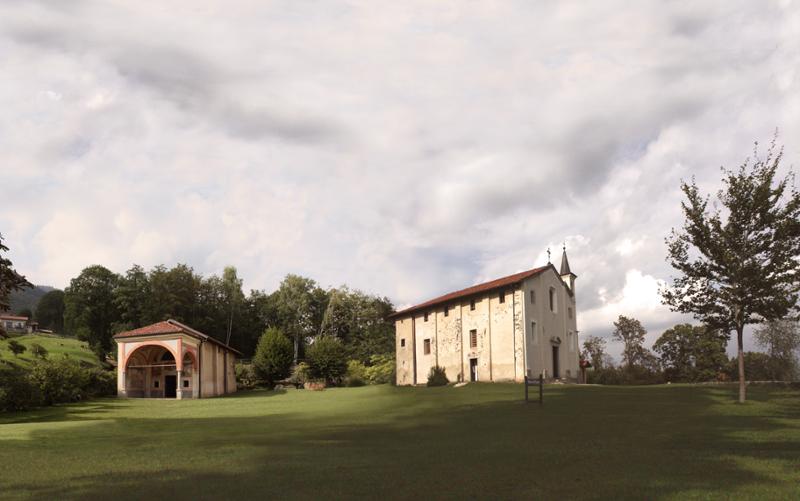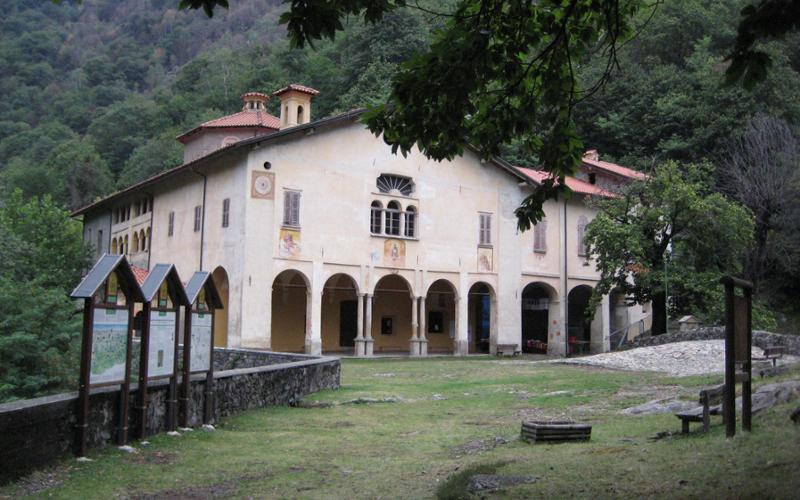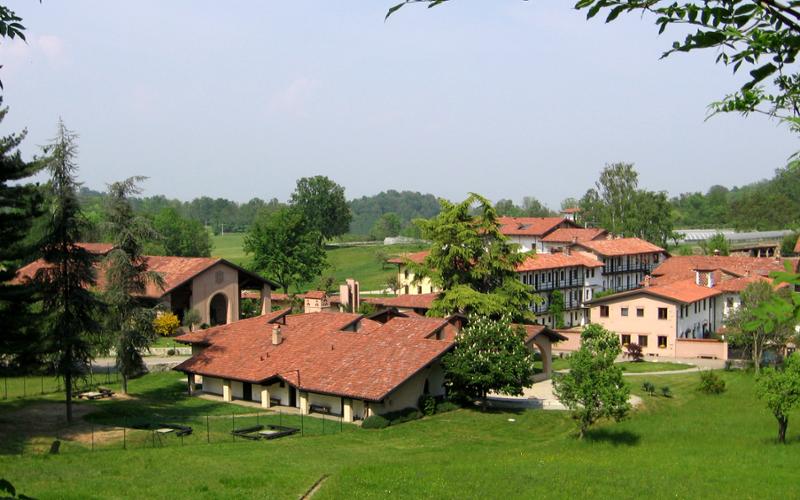Religious tourism in Piedmont and pilgrimages in the Biella province
Biella is a land of Sanctuaries. The most famous is definitely Oropa, which is amongst Europe's most important. Located in a charming hollow, the sacred place is tied to the cult of the Black Madonna, called the Saint Virgin of Oropa. Popular tradition has it that Saint Eusebius, Bishop of Vercelli in the IV C. A.D., was the founder of the Christian cult in Oropa. The Saint supposedly carried the wooden statue of the Virgin, sculpted by Saint Luke, all the way from Jerusalem to Oropa. Construction of an actual church is documented to have been in the 13th C.: since then the Sanctuary has expanded to its present in order to be able to host an increasing number of followers.
Today the monumental structure is composed of the Cloister with the Old Basilica, the New Basilica and the side structures where more than 200 modern rooms have been built for hosting pilgrims. A visit to the Sanctuary of Oropa is much more than a trip to a famous place. Its silences, its clear skies, the trickle of the water in the centrally located Burnell fountain and the green lawns, that are perfect for picnics, are all unforgettable. Must sees include the ex-voto collection in the galleries that run along the buildings, a tangible testimony to the devotion to the Virgin Bruna; the exhibit of the Oropa Valley's flora and fauna; the "Sacro Monte" and, upon request, the Observatory, the Library and the Sanctuary Treasury.
The Madonna is venerated in Biella at the Sanctuary of Graglia as well. The airy and picturesque Elvo Valley, surrounded by woods of chestnut and beech, was chosen in the XVII C. by the town priest, Don Nicolao Velotti, as an ideal place for the construction of the "Sacro Monte", which is made up of a very large Temple and over a hundred chapels, on the San Carlo hills. Unfortunately the initial project was wrecked and, in 1655, it was decided that it should be erected on the Hills of Divina Bontà (Di (Divine Goodness), upon which a chapel dedicated to the Madonna di Loreto, a grandiose Basilica, already existed.
The principal promoter was Duke Charles Emanuel II, who put Captain Piero Arduzzi, a civil and military engineer, in charge of the project to draw up the designs for the building. The Basilica's interiors are adorned with a splendid octagonal cupola which was decorated in 1870 by Fabrizio Galliari, and by the little chapel dedicated to the Madonna of Loreto.
A stay at the Sanctuary of Graglia is made additionally pleasant by the splendid green surroundings and the salubrious waters that surge directly from mountain sources. Just beyond the town of Campiglia, in the Cervo Valley, lies a charming road that winds up the green hill leading to the 1020 meter high Sanctuary of Saint John the Baptist of Andorno. The origin of this sacred place is unknown; around the icon of the Saint's image which was brought here in ancient times and venerated in a natural cave, rose the primitive Church in the XVII C.. This was later enlarged up to its present size, with the suggestive Burnell cloister, the colonnade and the church in the back. The Saint John Sanctuary is connected to the Oropa Sanctuary by a road that is not too easy to travel on as it passes through the Rosazza tunnel. To the three main Sanctuaries, other, so called minor ones, are added that are no less charming and filled with history and art. To know more about them, go to the sanctuaries pages by clicking the button below.

